Today around noon, Val was listening to the Orcasound hydrophones that he and Leslie host (as part of Beam Reach) at the “Orcasound Lab” they call home on the west side of San Juan Island. Around 13:40 he started hearing humpback sounds on the live stream he often has playing in the background near the kitchen. At 13:43 he Signaled me and at 13:55 he posted in Orcasound’s #general Slack channel, so that others could listen in to the live feed.
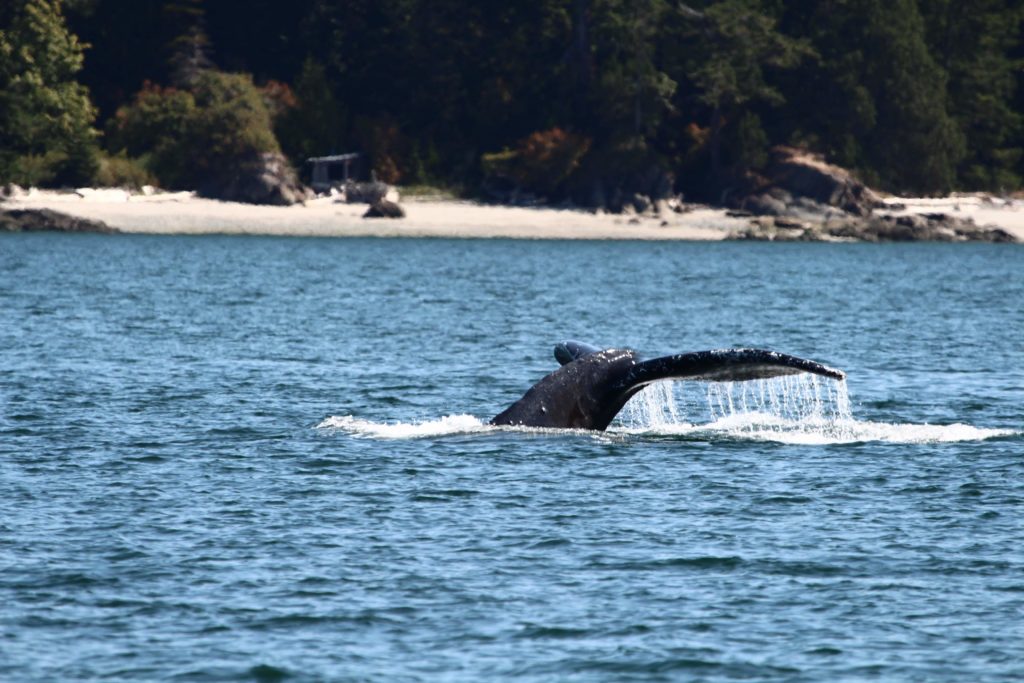
At about the same time, Orcasound listeners were also hearing the humpbacks and tagging the data in real-time using the “I hear something interesting!” button in the live-listening web app. Here are screenshots showing what a great job they did defining the bout, starting at 13:42:03:

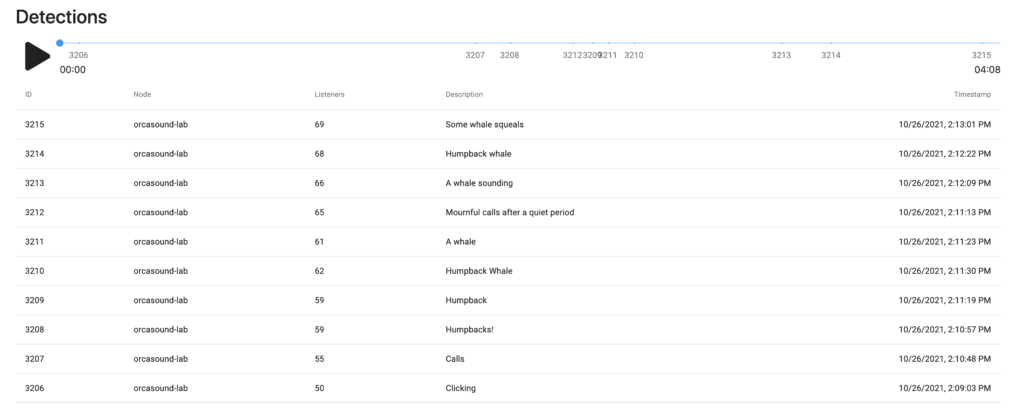
Of course, I was driving through Seattle at the time so didn’t realize what was going on until he called me at 14:01 after I was back at the home office. We agreed it was an exciting event and seemed to be likely to continue for a while. I headed to my laptop to send a Mailchimp email to the Orcasound subscribers, first checking vesselfinder.com to ensure no ships were approaching that might drown out the humpback song. By 14:08 the email was sent and I worked on posting to the OrcasoundApp Facebook and Twitter accounts, at the same time getting more context on the event from the local sighting networks.
This post presents the downloaded live-stream data and defines the start and end times of the bout. It also presents the raw data and preliminary labels in case you’d like to further analyze the humpback sounds. My preliminary analysis suggests that the humpback was audible for about 40.3 minutes, from 13:34:23 (first clear signal) to 14:14:43 (final faint signal) on Tuesday 26 October, 2021.
In retrospect, we our notification was on the late side. It took about 33 minutes between the first signals and our first (email) notification. A goal for 2022 is to work on getting Orcasound’s notification time down from minutes to seconds — using a combination of human listeners (community scientists) and artificial intelligence (like the OrcaHello inference system). Most folks arrived to listen live (peak of ~105 listeners) as the show was winding down…
So, for those of you who missed most of the concert (like me!), here’s a 1.25-minute highlight clip (in .ogg and .mp3 audio formats, both ~1MB files):
And here’s a spectrogram of that clip:
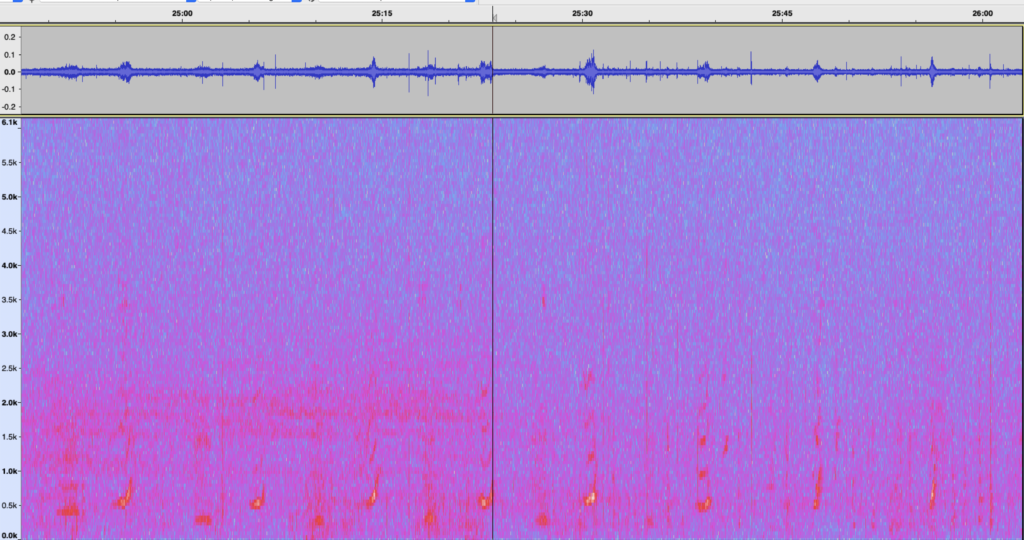
If you’d like to listen to the whole bout, it’s contained in this much longer (47-minute, 24MB) clip. Please feel free to download it and the associated first-draft labels I created when searching for the start and end of the bout. We’d love it if you helped us label more humpback calls, both so we can look for patterns in the sounds they make and to help train AI models to help us detect and classify Salish Sea humpback sounds. Import and add to mine, or — better yet — add your own label track and we can compare our annotations!
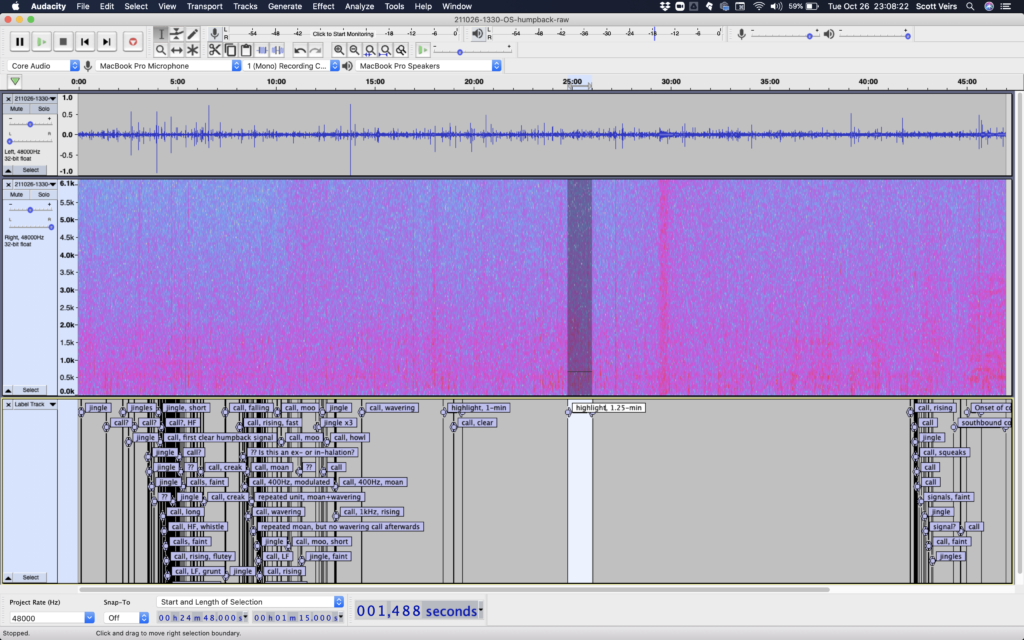
If you’d rather peruse and download these data from the Orcasound data archive, you can access these files at https://orcasound.net/data/product/biophony/humpbacks-inland-WA-BC/2021-10-26/ or the raw HLS segmented data (from which these clips were built and transcoded) using the machine learning and data access guidance provided at the orcadata wiki on Github.
Thanks to Val and other Orcasound listeners, this event is now part of Orcasound’s growing archive of bioacoustic bouts that enrich our open data archive and also helps to define an emerging pattern of Salish Sea humpbacks calling during the fall months within Haro Strait (especially Oct-Dec, 2013-2021).
P.S. If you do utilize Orcasound data, please be mindful of our Creative Commons license (NC-SA-BY, linked at the bottom of the page) and attribute your derivative works to “Orcasound” with a link back to orcasound.net
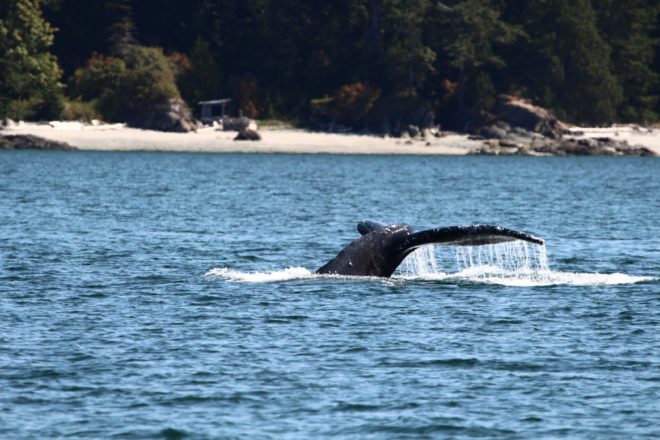
One thought on “A Haro humpback howls as Halloween harkens”